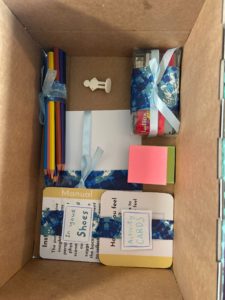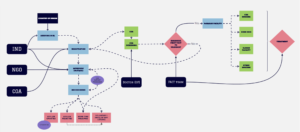Project
Care Code: Designing for Culturally Inclusive Mental Health
CTP Veldzicht x Design Across Cultures
How can we support transcultural psychiatric patients and their caregivers in their treatment process by making it more culturally sensitive? How might we design a culturally sensitive ‘conversation keeper’ for the transact care team and asylum seekers that ensures we can capture the understanding of the patient on their treatment trajectory?
The Center for Transcultultural Psychiatry (CTP) Veldzicht is an institution providing mental healthcare to patients who arrive in The Netherlands as asylum seekers. Mental distress has high prevalence among asylum seekers, including higher rates of depression, PTSD and other anxiety disorders.
While the group of patients receiving treatment at CTP Veldzicht is extremely diverse – they come from many different countries, hold different beliefs, and have different stories – they all end up at CTP Veldzicht after the decision is made in Dutch courts that they need psychiatric care because of (suspected) severe mental health issues forming a danger to the patients themselves and possibly others. Furthermore, the situation of this group of asylum seeker patients also complicates their mental health further – with very few chances of getting permanent residency in The Netherlands. In order to support this group of people wherever possible, it is therefore key that they receive the right psychiatric care so that any psychiatric problems are identified at an early stage.
However, the big cultural diversity of these patients can make it difficult for caregivers working at CTP Veldzicht to implement standardised interventions for patients’ intake and to monitor their treatment progression and effectiveness. One reason for this resides with the patients’ own understanding of mental health: coming from different backgrounds, they express mental health issues much less from their individual perspective but rather in relation to their community, they sometimes talk about physical pain when they mean to address issues related to their mental state, mental health can be a taboo in the country they are coming from, or they are altogether unaware of any issue they may have. Furthermore, the patients sometimes struggle trusting and opening up to caretakers because of bad experiences they may have had with such institutions in previous countries they resided in.
Most treatments are built on principles of Western Psychiatry and therefore mostly tuned to the experience of Western patients; the problem is that they can become too tunnel-visioned on the Western mental health experience alone and are therefore not particularly culturally sensitive – indeed, they might not be able to recognise mental health problems outside of this spectrum as problems at all. Without such recognition, the risk here is that patients might not get the right treatment or diagnosis and that the treatment itself possibly even works in counterproductive ways for the patient.

In order to bridge this gap, CTP Veldzicht has paired up with the Design Across Cultures Track at Digital Society School. With a team of 6 trainees, who have very different cultural and educational backgrounds, we are working together with CTP Veldzicht on a digital methodological solution that supports the caregiver in their work of treating and diagnosing the patient. The goal is not to abandon the previously existing methods as such – rather, the focus is to broaden the range of insights that these methods can provide. To put it more simply: How can we help change the treatment process into more of a dialogue between caregiver and patient, instead of a one-directional conversation? How can we give the patient the space to express their stories, and how can we give the caretaker the means to interpret that?

The past 6 months, our team has explored the problem space, and found the following criteria for a good solution:
- Since the patients do not have access to much technology – most of them only have a smart phone – the solution needs to be very low-tech.
- The group of patients is extremely diverse – they come from all over the world, speak a variety of languages, and have varying mental and cognitive abilities. One of the main challenges that Veldzicht faces is the language barrier and finding suitable treatment for this diverse group. Therefore, is is important that the solution needs to be very visual and easy to understand.
- We want to lower the threshold for patients to open up about their well-being. The solution therefore has to be interactive and fun.
- The patients need to gain more agency and overview of their own treatment process. Therefore, the solution needs to guide the patients through their treatment process by helping them set and track their own goals and milestones.
- Finally, and most importantly, the solution needs to capture the patient’s own experience of the treatment by giving them a voice. Rather than following current methods that already assume what is important in mental health, we want to better understand what is important to them.


brainstorming, brainstorming…

After 6 months of hard work, our team has come up with the following solution: Care Code.
https://www.youtube.com/watch?v=im4L8zpO9k0&feature=youtu.be
The idea is simple but sweet:
- Upon arrival at the facilities, patients receive a welcome package with a booklet, colouring pens, and some instructions. Additionally, they will only need a smart phone with a camera.
- The booklet contains a variety of questions and exercises, in which the patients are asked to reflect on their values, difficulties, and treatment in a playful way. Before every therapy session, the patients are asked to answer one question.
- To keep the threshold as low as possible, the patients can give their answers by making a drawing, take a picture, record a message, or share an emoticon.
- The patient then shares their answer through a QR code in the booklet, which redirects them to a chat with their therapist.
- During the therapy sessions, the submitted answers are used as conversation keepers between the patient and the caregiver. Through the exercises, they can explore together what is important to the patient, what goes well, and what they find difficult, through innovative, low-threshold, and fun ways.


